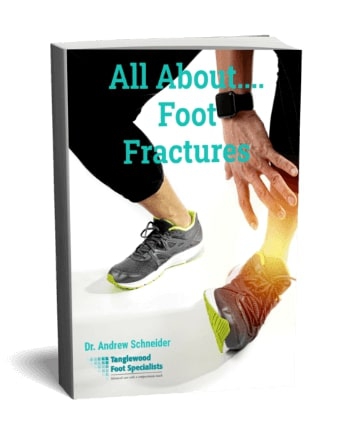 A while back, I met a very nice man in my office. He's in his 60s, diabetic, and is so focused on keeping himself healthy. He knows how to live his life as a diabetic and wants to ensure that his feet are able to carry him. With him his son, who was very worried. After all, the grown child's father-in-law had both legs amputated before he passed away.
A while back, I met a very nice man in my office. He's in his 60s, diabetic, and is so focused on keeping himself healthy. He knows how to live his life as a diabetic and wants to ensure that his feet are able to carry him. With him his son, who was very worried. After all, the grown child's father-in-law had both legs amputated before he passed away.
But back to that important visit. About a month before coming in, my patient stubbed his toe. And the wound from that injury wasn't healing.
At first, he tried home treatments. He poured hydrogen peroxide over the toe. Then, he dressed it with an over-the-counter topical antibiotic. Plus, he visited his family doctor. And at that office, he got a prescription antibiotic, but his toe didn't improve well.
As a diabetic, he knew better than to ignore a wound. So, he went back to the doctor after scratching the top of the same foot. And noticing those scratches weren't healing well either.
Unfortunately, his doctor had limited tools for diabetic feet. So, all he could do was change his antibiotic to a stronger one. But they soon saw there wasn't improvement. And that's when the doctor told this man he needed to see a podiatrist. Fortunately, he referred him to my Houston podiatry office. Soon, I'll share how I treated this diabetic patient. But first, I want to talk about the danger in stubbing your toe. For any patient, not just for diabetics.
Stubbing your toe means you hit the toe end against a blunt object. (In my world, it's often a wall when I'm stumbling for a midnight drink in my dark bedroom. While barefoot, of course.)
Even if stubbed toes don't cause serious injury, they really hurt. Often, a lot more than other, more severe, foot conditions. Why is that the case?
Well, the ends of your toes are packed with lots of nerve endings. And they're all close together, in that small space. So even a minor impact can cause major pain. Then, because of the delicate bones in your toes, you may also discover that a minor impact could lead to injury. So stubbing your toe could cause a turf toe sprain. (That is usually a sports injury, especially for foot ball players. But it can happen anytime you jam your toe on a hard surface.) Or, in some cases, a stubbed toe could even cause a fracture!
Houston podiatrist Dr. Andrew Schneider wrote a book all about healing diabetic foot ulcers. Just complete the short form to receive your FREE copy.
Dr. Andrew Schneider has written a book all about foot fractures and broken feet. He is offering it to you today for FREE. Just complete the short form.
Houston podiatrist Dr. Andrew Schneider has written a free e-book and video series about diabetic foot health. Complete the form to receive it immediately.
Adressing your stubbed toe will depend on how much pain you experience. Right after stubbing your toe, you'll be in lots of pain. that's normal. So wait a few minutes and see if the pain goes down.
Once the throbbing pain stops, take a close look at your toe. Check for signs of damage to your skin, nail or nail bed. (Anything from a crack in your nail to blood or lasting redness could be a problem.)
If the problems are minor, you can wait another day or two. While you're waiting, try RICE treatment. (Rest, Ice, Compression and Elevation.) When RICE relieves your stubbed toe pain, great. But if you notice swelling, bruising or pain after several days, it's time to see me in the office. Which is exactly what my diabetic patient did. Eventually.

When I first saw this man, there was one main concern after his stubbed toe. It looked like a typical infected ingrown toenail. I was relieved that there was no gangrene and no excessive swelling. In fact, nothing about the toe looked remarkable.
Because of that, I trimmed the toenail away from the proud flesh of the infected ingrown toenail. But that's when things got scary. You see, on further examination, I saw this wasn't a typical ingrown toenail. Instead, the infection tracked down all the way to bone. Right away, I knew more tests were in order. Stat!
I sent my patient to our in-office x-ray machine in our Houston podiatry practice. The films we got back that day showed changes in his toe bone. Right away, I knew this was an emergency. Because those changes were a sign that the infection was in his bone!
Quickly, I sent him for an MRI of the foot. That way, I could see the full scope of the infection. So we could come up with a treatment plan. Now, we were lucky he came my way when he did. But you can see now how he came in with what looked like a simple ingrown toenail. (Which I could fix with a simple procedure.) But which was actually a diabetic foot ulcer with a bone infection. For which he'd likely need weeks of IV antibiotics.
Sadly, this story keeps going. Because my poor patient had more problems. The second issue we had to check was if he had the blood flow to bring the antibiotic down to the infeected area.
After all, many diabetics develop poor circulation as a disease complication. And this patient showed some outward signs of blood flow restriction.
Now, that's a big problem. Because if blood doesn't reach the infected area, all the antibiotics in the world won't resolve his infection. So we needed to know what we were dealing with. And we had just the tools to do that!
To assess blood flow, we use the PADnet system. Through this non-invasive test, we will be able to see the status of his circulation to his feet and toes. If there isn't enough blood flow, that's a bigger issue. And I'd refer him to a vascular surgeon or interventional cardiologist. Either one can offer a procedure to restore blood flow.
Thankfully, by working with his family doctor, I felt confident we could heal my patient's diabetic foot ulcer. But the most important take-away is this. If you have any foot or toe problem that isn't healing like you think it should, that's a sign of a major problem.
As I said in the title of this blog, it's too easy to go from a stubbed toe to a diabetic amputation. After all, if he hadn't seen me when he did, my patient would have lost his toe. (Or maybe even his foot or leg.)
Luckily, he came to a podiatrist for a toe injury that just didn't feel right. In making that decision, he saved his foot. So I hope you learn from his success.
When you've hurt your toe, foot or ankle, the pain should clear up quickly. But if it doesn't? You're probably dealing with a bigger issue. Because, even if everything looks normal, trouble could be brewing underneath.
So, how can you protect your toes and feet? The only safe way is to come see me after any injury. That means you can't ignore lingering pain. Instead, make an immediate appointment to come in for an exam. I may see nothing, and I'll send you home to rest and ice your toe. But I just might catch a problem that, left ignored, could cost you your limb. Or your life. When you look at it that way, it's not even a choice. Am I right?















